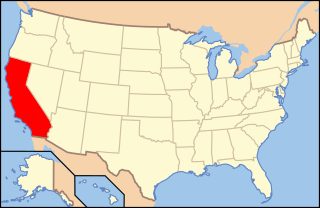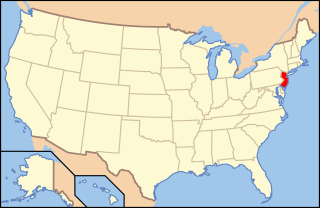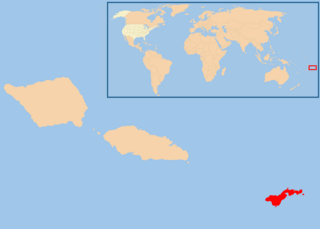Related Research Articles
Gun laws and policies, collectively referred to as firearms regulation or gun control, regulate the manufacture, sale, transfer, possession, modification, and use of small arms by civilians. Laws of some countries may afford civilians a right to keep and bear arms, and have more liberal gun laws than neighboring jurisdictions. Countries that regulate access to firearms will typically restrict access to certain categories of firearms and then restrict the categories of persons who may be granted a license for access to such firearms. There may be separate licenses for hunting, sport shooting, self-defense, collecting, open carry and concealed carry, with different sets of requirements, permissions, and responsibilities.
In the United Kingdom, access by the general public to firearms is subject to some of the strictest control measures in the world. Subject to licensing, members of the public may own rifles and shotguns. However, most handguns have been banned in Great Britain since the Dunblane school massacre in 1996. Handguns are permitted in Northern Ireland, the Channel Islands and the Isle of Man which have their own legislation. Scotland imposes an additional licensing regime on airguns, which is not mirrored in England and Wales.
Firearms regulation in Finland incorporates the political and regulatory aspects of firearms usage in the country. Both hunting and shooting sports are common hobbies. There are approximately 300,000 people with hunting permits, and 34,000 people belong to sport shooting clubs. Over 1,500 people are licensed weapons collectors. Additionally, many reservists practice their skills using their own semi-automatic rifles and pistols after the military service.

Firearms regulation in Switzerland allows the acquisition of semi-automatic, and – with a may-issue permit – fully automatic firearms, by Swiss citizens and foreigners with or without permanent residence. The laws pertaining to the acquisition of firearms in Switzerland are amongst the most liberal in the world. Swiss gun laws are primarily about the acquisition of arms, and not ownership. As such a license is not required to own a gun by itself, but a shall-issue permit is required to purchase most types of firearms. Bolt-action rifles do not require an acquisition permit, and can be acquired with just a background check. A reason is not required to be issued an acquisition permit for semi-automatics unless the reason is other than sport-shooting, hunting, or collecting. Permits for concealed carrying in public are issued sparingly. The acquisition of fully automatic weapons, suppressors and target lasers requires special permits issued by the cantonal firearms office. Police use of hollow point ammunition is limited to special situations.

Norwegian nationality law details the conditions by which an individual is a national of Norway. The primary law governing these requirements is the Norwegian Nationality Act, which came into force on 1 September 2006. Norway is a member state of the European Free Trade Association (EFTA) and the Schengen Area. All Norwegian nationals have automatic and permanent permission to live and work in any European Union (EU) or EFTA country.
In South Africa, the Firearms Control Act 60 of 2000 regulates the possession of firearms by civilians. Possession of a firearm is conditional on a competency test and several other factors, including background checking of the applicant, inspection of an owner's premises, and licensing of the weapon by the police introduced in July 2004. In 2010, the process was undergoing review, as the police were not able to timely process either competency certification, new licences or renewal of existing licences. Minimum waiting period used to exceed two years from date of application. The Central Firearms Registry implemented a turnaround strategy that has significantly improved the processing period of new licences. The maximum time allowed to process a licence application is now 90 days.
The crossbow often has a complicated legal status due to its potential use for lethal purposes, and its similarities with both firearms and other archery weapons. The crossbow is, for legal purposes, often categorized as a firearm by various legal jurisdictions, despite the fact that no combustion is required to propel the projectile.
The gun laws of New Zealand are contained in the Arms Act 1983 statute, which includes multiple amendments including those that were passed subsequent to the 1990 Aramoana massacre and the 2019 Christchurch mosque shootings.
In Germany, access to guns is controlled by the German Weapons Act which adheres to the European Firearms Directive, first enacted in 1972, and superseded by the law of 2003. This federal statute regulates the handling of firearms and ammunition as well as acquisition, storage, commerce and maintenance of firearms.

Gun laws in California regulate the sale, possession, and use of firearms and ammunition in the state of California in the United States.

Gun laws in the Czech Republic in many respects differ from those in other European Union member states (see Gun laws in the European Union). The "right to acquire, keep and bear firearms" is explicitly recognized in the first Article of the Firearms Act. At the constitutional level, the Charter of Fundamental Rights and Freedoms includes the "right to defend one's own life or life of another person also with arms under conditions stipulated by law".
This is a list of laws concerning air guns by country.
Gun control in Italy incorporates the political and regulatory aspects of firearms usage in the country within the framework of the European Union's Firearm Directive. Different types of gun licenses can be obtained from the national police authorities. According to a 2007 study by The Small Arms Survey Project, the per capita gun ownership rate in Italy is around 12% with an estimated 7 million registered firearms in circulation.

Gun laws in New York regulate the sale, possession, and use of firearms and ammunition in the U.S. state of New York, outside of New York City which has separate licensing regulations. These regulations are very strict in comparison to the rest of the United States.

Gun laws in Massachusetts regulate the sale, possession, and use of firearms and ammunition in the Commonwealth of Massachusetts in the United States. These laws are among the most restrictive in the entire country.

Gun laws in New Jersey regulate the sale, possession, and use of firearms and ammunition in the U.S. state of New Jersey. New Jersey's firearms laws are among the most restrictive in the country.
Irish law allows firearm possession on may-issue basis. With approximately seven civilian firearms per 100 people, Ireland is the 107th most armed country in the world.
To buy a firearm in France, in line with the European Firearms Directive, a hunting license or a shooting sport license is necessary depending on the type, function and magazine capacity of the weapon.

Gun laws in American Samoa regulate the sale, possession, and use of firearms and ammunition in the unincorporated territory of American Samoa.
Austrian law allows firearm possession on shall-issue basis with certain classes of shotguns and rifles available without permit. With approximately 30 civilian firearms per 100 people, Austria is the 14th most armed country in the world.
References
- ↑ "Lov om våpen, skytevåpen, våpendelar og ammunisjon (våpenlova) - Lovdata". lovdata.no. Retrieved 26 June 2023.
- 1 2 "Forskrift om våpen, skytevåpen, våpendelar og ammunisjon (våpenforskrifta) - Lovdata". lovdata.no. Retrieved 26 June 2023.
- ↑ "Norsk Våpenhistorisk Selskap |" (in Norwegian Bokmål). Retrieved 26 June 2023.
- ↑ "Revisjonsrapport for 2017 om politiets behandling av våpensaker" (PDF). riksrevisjonen.
- ↑ "Nå er det over 1,3 millioner private skytevåpen i Norge. To distrikter troner klart øverst på våpenstatistikken". 10 February 2017.
- ↑ "Norsk Våpenhistorisk Selskap |" (in Norwegian Bokmål). Retrieved 30 June 2023.
- ↑ "Forskrift om våpen, skytevåpen, våpendelar og ammunisjon (våpenforskrifta) - Krav til personlege eigenskapar - Lovdata". lovdata.no. Retrieved 30 June 2023.
- ↑ "Lover og regler om våpen". Politiet (in Norwegian Bokmål). Retrieved 26 June 2023.
- ↑ "Forskrift om våpen, skytevåpen, våpendelar og ammunisjon (våpenforskrifta) - Erverv av skytevåpen og våpendelar til sportsskyting - Lovdata". lovdata.no. Retrieved 30 June 2023.
- ↑ "Forskrift om våpen, skytevåpen, våpendelar og ammunisjon (våpenforskrifta) - Erverv av skytevåpen og våpendelar til sportsskyting - Lovdata". lovdata.no. Retrieved 30 June 2023.
- ↑ "Forskrift om våpen, skytevåpen, våpendelar og ammunisjon (våpenforskrifta) - Erverv av skytevåpen og våpendelar til sportsskyting - Lovdata". lovdata.no. Retrieved 30 June 2023.
- ↑ "Forskrift om våpen, skytevåpen, våpendelar og ammunisjon (våpenforskrifta) - Kapittel 6. Oppbevaring, transport og sending av skytevåpen, våpendelar og ammunisjon - Lovdata". lovdata.no. Retrieved 30 June 2023.
- ↑ "Forskrift om våpen, skytevåpen, våpendelar og ammunisjon (våpenforskrifta) - Kapittel 6. Oppbevaring, transport og sending av skytevåpen, våpendelar og ammunisjon - Lovdata". lovdata.no. Retrieved 30 June 2023.
- ↑ "Forskrift om våpen, skytevåpen, våpendelar og ammunisjon (våpenforskrifta) - Kapittel 11. Forvalting, kontroll og tilbakekall av våpenløyve - Lovdata". lovdata.no. Retrieved 30 June 2023.
- 1 2 "Forskrift om våpen, skytevåpen, våpendelar og ammunisjon (våpenforskrifta) - Kapittel 6. Oppbevaring, transport og sending av skytevåpen, våpendelar og ammunisjon - Lovdata". lovdata.no. Retrieved 30 June 2023.